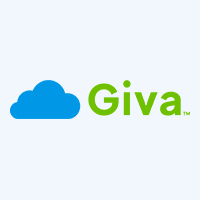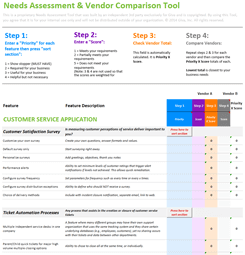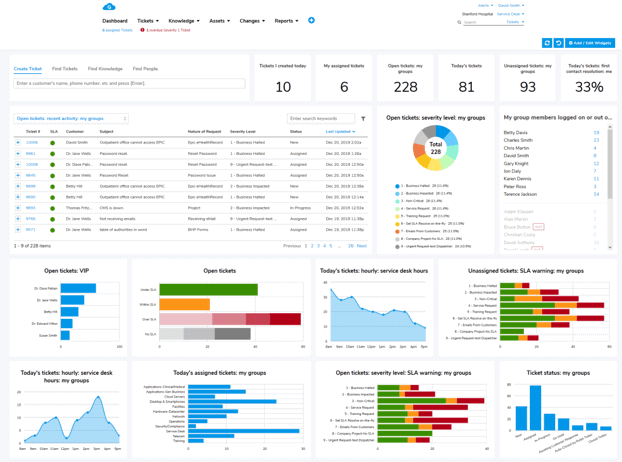Call Center Quality Assurance: Best Practices and Strategic How-To Guide
Delivering exceptional customer experiences is not only about answering calls quickly but focuses on how well every interaction is handled. That's where call center Quality Assurance (QA) comes in. It's the backbone of consistent service, operational efficiency, and ongoing improvement for companies that take customer support seriously.
In this guide, we'll break down the essentials of call center QA, share proven best practices, explore strategic frameworks, and show how software and AI are changing the game. Whether you're refining an established program or building out a more data-driven approach, this resource is designed to help you improve outcomes at scale.

What is Call Center Quality Assurance?
Call center quality assurance is the process of tracking, assessing, and enhancing customer interactions to make sure they meet predetermined performance requirements. It involves assessing how agents handle calls, chats, or emails, and whether they align with company guidelines, compliance requirements, and customer service best practices.
At its core, QA is about consistency. It helps make sure that no matter who answers the phone or when, every customer receives a high-quality experience. This process typically includes the use of the following to identify both strengths and areas for improvement across the team:
- Scorecards
- Call monitoring tools
- Feedback loops
- Coaching frameworks
Unlike one-time training or occasional feedback, quality assurance is ongoing and strategic. It not only helps catch mistakes but also:
- Drives continuous improvement
- Supports agent development
- Contributes directly to customer satisfaction, loyalty, and overall contact center performance
Key elements of call center quality assurance include:
- Monitoring and scoring agent interactions
- Providing structured feedback and coaching
- Aligning performance with business and customer goals
- Driving continuous improvement across teams
Why QA Matters in Call Centers
-
Inconsistent Service Can Damage Customer Trust
In busy call centers, even small service issues can have a big impact.
For example, technology downtime can delay responses and frustrate customers. Inconsistent messaging between agents can erode trust and create confusion. Missed compliance steps can lead to regulatory risks. That's why call center quality assurance isn't just a task but also a key strategy for improving customer relationships, operational efficiency, and brand reputation.
-
QA Creates Structure for Continuous Improvement
When done well, quality assurance gives teams a clear structure for spotting what's working, what needs improvement, and how to close performance gaps.
For example, regular QA reviews might reveal that certain agents consistently struggle with call openings, allowing managers to offer targeted coaching. It helps ensure every customer interaction reflects your company's standards and values, building trust, one conversation at a time.
-
It Empowers Managers and Teams with Actionable Data
Beyond improving the customer experience, quality assurance also empowers internal teams. It gives managers the data they need to coach more effectively, highlight training opportunities, and improve internal processes.
For instance, if QA data shows a recurring drop-off in performance during high call volume periods, leadership can adjust staffing models or provide stress management training to address the root cause.
-
It Drives ROI Through Smarter Operations
When QA is strategically aligned with metrics like Customer Satisfaction (CSAT) and First Call Resolution (FCR), it becomes a powerful driver of ROI.
For example, research from SQM shows that each 1% improvement in First Call Resolution can result in a 1% increase in customer satisfaction -- a direct, measurable outcome that ties QA efforts to business results.
Giva's customer service platform supports quality assurance with real-time analytics, performance tracking, and configurable tools to help teams consistently monitor and improve service quality. Learn more and start a free trial!
10 Best Practices for Call Center QA
Implementing strong call center quality assurance practices helps build a scalable, consistent, and improvement-driven culture. Below are ten essential best practices that leading contact centers follow to drive performance, compliance, and customer retention.
-
Define Clear Quality Standards
Before any QA program can be effective, it needs well-defined benchmarks. These should include measurable criteria for customer interactions such as professionalism, empathy, resolution accuracy, and compliance with scripts or protocols.
How to:
Using call center QA scorecards helps standardize evaluations across agents and teams. Scorecards should reflect your company's voice and goals while remaining flexible enough to evolve over time.
-
Consistent Monitoring and Evaluation
Effective quality assurance monitoring requires regular review of interactions -- not just occasional spot-checks. This might include listening to calls, reviewing chat transcripts, or assessing ticket responses across channels.
How to:
High-performing QA teams set a cadence (e.g., X calls per agent per week) and use tools to track and analyze trends. Consistency allows for meaningful coaching and performance baselining.
-
Continuous Agent Training and Coaching
Call center agent coaching should be continuous, not reactive. Use QA insights to tailor coaching plans to individual agent strengths and weaknesses. Role-playing, side-by-side reviews, and micro-learning modules can reinforce key behaviors.
Bonus:
QA data can also inform group training sessions, helping address common issues and raise the bar across the team.
-
Use QA Software Effectively
Manually managing QA is difficult at scale. That's why many call centers invest in quality assurance software to streamline evaluation, tracking, and reporting.
-
Build a Feedback Culture
Feedback should flow in both directions. While supervisors review agent performance, agents should also be encouraged to share their experiences and challenges.
How to:
Establish regular feedback loops through coaching sessions, post-call surveys, or team huddles. This improves buy-in and makes QA a collaborative effort rather than a top-down audit.
-
Align QA with Customer Satisfaction (CSAT/NPS)
QA shouldn't exist in a silo. It should align with outcomes like Customer Satisfaction scores (CSAT), Net Promoter Score (NPS), and First Call Resolution rates (FCR). When QA focuses only on internal compliance, it can miss what actually matters to the customer.
Important!
Linking QA metrics with customer feedback ensures that evaluations reflect real-world impact.
-
Set QA Goals Based on Business Objectives
Your quality assurance program should reinforce broader business goals, whether it's improving retention, reducing escalations, or enhancing response times.
How to:
Customize QA criteria to match what success looks like for your company. For example, if speed is critical, include handling time and resolution efficiency in evaluations.
-
Calibrate Regularly Across Evaluators
Inconsistent scoring undermines agent trust and QA credibility. Regular QA calibration sessions where multiple evaluators score the same interactions and compare notes ensure fairness and alignment.
Good to know:
Calibration also helps uncover subjective biases and keeps evaluators focused on agreed-upon standards.
-
Balance Automation and Human Judgment
AI tools can assist with call transcription, keyword detection, and even preliminary scoring. However, they shouldn't fully replace human oversight. Automated QA software is most effective when it complements human insight.
How to:
Use automation for volume and pattern recognition, and rely on managers for context, coaching, and exception handling.
-
Make QA Transparent and Collaborative
Agents should understand how they're being evaluated, why it matters, and how to improve. Share QA results openly, explain scoring criteria, and invite agents into the process.
Remember:
When QA is transparent, it becomes a development tool -- not just a performance metric.
4 Frameworks for Call Center QA
Here are four proven QA frameworks that many contact centers use to guide their quality management efforts:
-
QA Scorecard Framework
A custom call center QA scorecard is often the foundation of any program. It defines the specific criteria used to evaluate agent interactions, such as call resolution, communication style, compliance, and professionalism.
Best practices include:
- Using weighted scoring categories
- Creating separate forms for different interaction types (e.g., phone, chat, email)
- Reviewing and updating criteria regularly to match evolving standards
Who is it for?
This flexible framework is ideal for teams that want full control over their evaluation process and the ability to align metrics with internal goals.
-
Customer Operations Performance Center (COPC) Standards
The COPC Customer Experience (CX) Standard is a set of operational guidelines built specifically for contact centers. It lays out how to manage customer interactions effectively, measure performance, and improve service over time. Originally created for outsourced call centers, it's now widely used by both in-house and third-party teams looking for a structured way to deliver consistent, high-quality support. At its core, it helps teams run more efficiently while keeping the customer experience front and center.
Organizations that follow COPC principles:
- Use data-driven benchmarks
- Establish process consistency across all channels
- Focus on continuous improvement based on measurable outcomes
Who is it for?
Though more formal and audit-driven, COPC is a strong option for enterprise call centers seeking operational excellence and third-party validation.
-
Six Sigma in QA
Six Sigma is a methodology focused on reducing variability and improving quality through data analysis and process control. In the context of call center QA, it can be used to identify root causes of performance issues and eliminate inefficiencies.
For example:
- Applying DMAIC (Define, Measure, Analyze, Improve, Control) to agent performance
- Using statistical analysis to refine QA scorecard thresholds or identify training gaps
Who is it for?
Six Sigma is best suited for organizations that prioritize precision, data accuracy, and large-scale optimization.
-
Balanced Scorecard Approach
The balanced scorecard framework incorporates QA into a broader view of call center performance by looking at multiple dimensions:
- Agent learning and development
- Internal process improvements
- Customer satisfaction metrics
- Financial impact of quality initiatives
Why this could work for you:
It encourages call center leaders to view QA not as a siloed function, but as a strategic component tied to long-term business value.
There's no single "best" approach. The right framework depends on your company size, goals, and operational maturity. Many organizations blend elements of these models to create a hybrid QA structure that works for them.
Incorporating Technology and AI in QA
As call centers grow more complex, the role of technology, including Artificial Intelligence (AI), in quality assurance is becoming critical. Automation and AI-driven tools are no longer just "nice to have". They're essential for teams that need to scale without sacrificing accuracy or insight.
Modern call center quality assurance software often includes features like:
- AI-powered sentiment analysis to detect customer emotions
- Automated call scoring that flags issues based on keywords or phrases
- Real-time dashboards for agent monitoring and performance trends
- These tools allow QA teams to process a much larger volume of interactions, surface outliers faster, and focus human effort where it matters most -- coaching, context, and decision-making
As we mentioned earlier, AI should complement, not replace, human judgment. Algorithms can detect patterns and generate insights, but it still takes people to understand nuance, context, and emotional intelligence.
Giva's customer service platform offers real-time dashboards, customizable workflows, and AI-powered tools to enhance quality assurance processes. These features allow teams to monitor agent performance, automate routine tasks, and gain actionable insights, facilitating a blend of automation and human oversight for more effective quality assurance at scale.
The Bottom Line: Call Center QA is the Key to Consistency and Growth
Quality assurance not only evaluates past interactions but helps shape future performance. As discussed, strong call center quality assurance practices create a foundation for customer trust, agent development, and operational success.
Whether you're refining your QA program or building one with modern tools, the right mix of people, process, and technology will drive meaningful improvement.
Resources
-
Giva Customer Service Software
Explore Giva's customer service software platform, offering real-time dashboards, customizable QA workflows, and performance analytics to streamline quality assurance processes.
-
Call Center Training: Benefits, Types, and Best Practices
Discover how structured call center training programs can improve agent performance, compliance, and customer satisfaction.
-
Understanding Call Center Service Levels
Gain insights into key metrics for call center service levels like First Call Resolution (FCR) and Service Level Agreements (SLAs) to measure and enhance service quality.
-
Customer Service Knowledge Management
Learn how effective call center knowledge management systems can empower agents and improve response times.
Learn more about Giva by getting a free demo to see our solutions in action, or start your own free, 30-day trial today!





